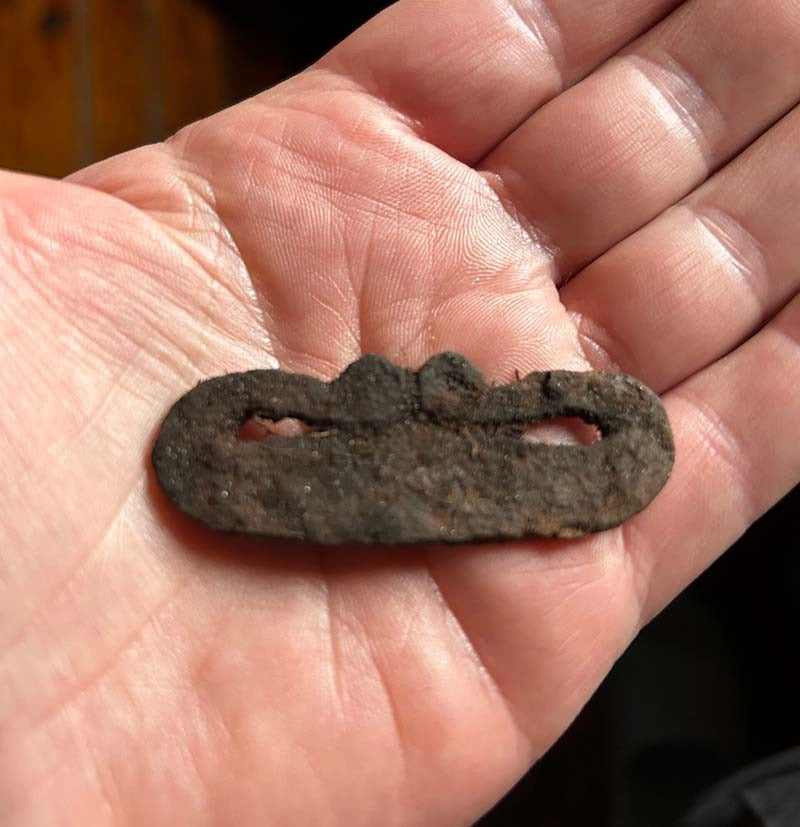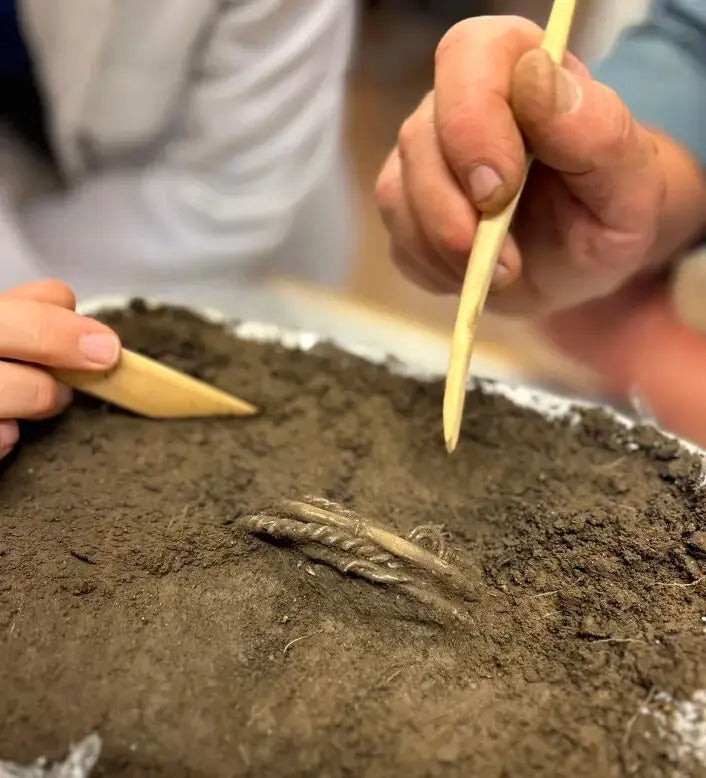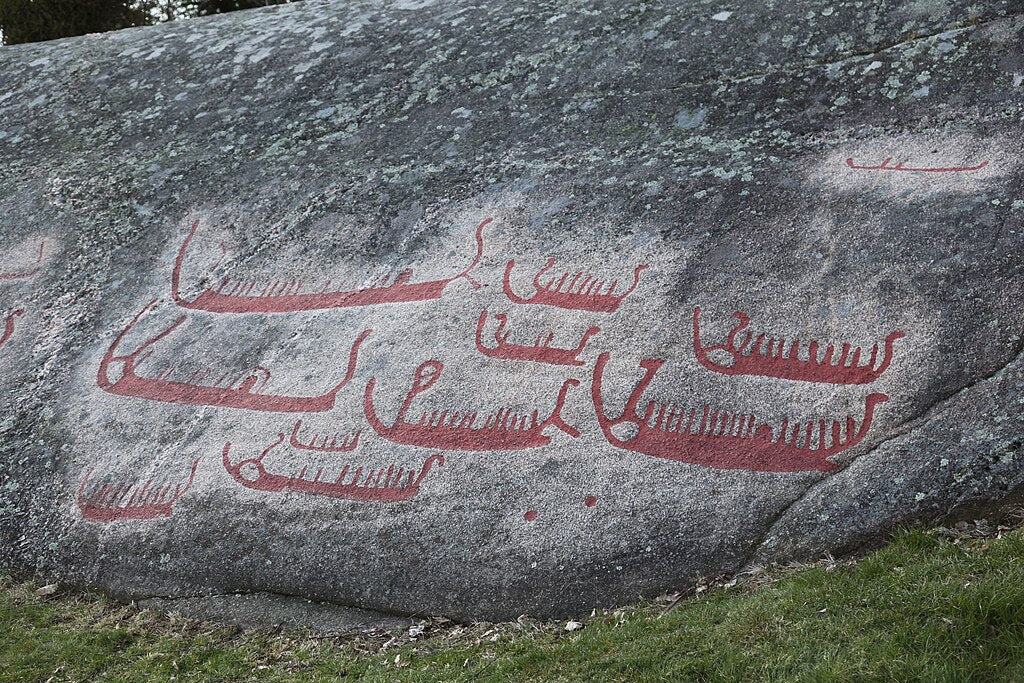
Archaeologists Discover Viking Hunters Refuge on Historic Trail
Along the historic Nordmannslepa, an ancient transport route that traverses Hardangervidda, lies a testament to centuries of human travel and trade. This summer, a dedicated team of archaeologists set out to explore one of the oldest lodgings in this challenging landscape, illuminating the lives of those who once journeyed along these mountain paths.
The Great Nordmannslepa: A Path Through History

The Great Nordmannslepa trail winding through the rugged terrain of Hardangervidda, Norway's largest mountain plateau. This historic route has been used for centuries, offering breathtaking views of the Scandinavian wilderness. Photo: Magne Samdal.
The Nordmannslepa, which winds its way through the rugged terrains of Hardangervidda—Norway's largest mountain plateau—has been a crucial connection between Western and Eastern Norway for generations. This winding path, marked by stone cairns, has guided countless travellers through the formidable landscapes of the Hardangervidda. The origin of the name "Nordmannslepa" is particularly interesting, as noted in an 1821 travelogue by Professor Christopher Hansteen:
"For the edge of the world, which among all other Christian peoples is called west, in this valley is called north. Thus they call the Hardangers, who come to them over the mountain from the west, Norwegians."
Hansteen, a prominent scientist of his era, was renowned for his meticulous calculations, including pinpointing the location of the capital and the date of the Battle of Stiklestad (31 August 1030). His journey through Hardangervidda was motivated by a quest to rectify inaccuracies in the Pottopida map, emphasizing the significance of these mountain routes for both trade and scientific exploration.
Rediscovering the Holmetjønn Cabins
This summer, archaeologists travelled about five kilometres inland from the Stigstuv tourist hut, following in the footsteps of ancient travellers. Their destination was Holmetjønn, where Professor Hansteen had described a stone cabin in 1821:
"Between one and two o'clock in the afternoon we came upon a deserted stone cabin whose roof had fallen down, and which my companion called the Holmetjern camp."
To the archaeologists' surprise, they discovered not one, but two cabin remains. The stone wall on a slope likely belongs to the hut Hansteen saw, while on the plain below lies an even older cabin site dating back to the Viking Age and Middle Ages.
Unearthing Viking Age Secrets
The excavation of the older cabin unveiled a trove of insights into life in this harsh environment centuries ago. The structure comprised two rooms: a small entryway and a larger main area featuring a central fireplace. This fireplace served as a significant source of historical evidence, revealing a 40 cm layer of soot and animal bones that testify to generations of use.
Remnants of past meals were discovered, including birds, fish, and reindeer. Among the more striking finds were entire cattle jaws in the ash, suggesting the possibility that diners may have enjoyed smalahove, a traditional dish of sheep's head.
Artifacts That Speak Volumes

A striking fire steel discovered by archaeologists, showcasing the craftsmanship of the era. Photo: Museum of Cultural History, University of Oslo.
Among the most significant finds were items that offer a tangible connection to the site's Viking Age occupants:
- A beautifully preserved fire steel, typical of Viking Age design
- Pieces of flint for fire-starting
- Two well-crafted hunting arrows
These artifacts, especially the arrows found just inside the cabin entrance, raise intriguing questions about the lives and activities of those who sought shelter here centuries ago.
Looking to the Future
The excavation at Holmetjønn is part of the NFR project FOODIMPACT, the first major study of urban food culture in medieval Norway. The success of this initial dig has paved the way for further investigations planned for next year.
As we await the next phase of this exciting project, it's clear that the old cabin at Holmetjønn and the great Nordmannslepa have many more stories to tell. These ongoing excavations promise to provide invaluable insights into the lives, habits, and challenges faced by those who traversed these ancient mountain paths, deepening our understanding of Norway's rich cultural history.
For more information on the FOODIMPACT project and updates on future excavations at Holmetjønn, visit the Museum of Cultural History's official website.
References
Vedeler, M. (2024, September 6). The old cabin at Holmetjønn. Museum of Cultural History, University of Oslo. https://www.khm.uio.no/om/aktuelt/aktuelle-saker/den-gamle-hytta-ved-holmetjonn.html








